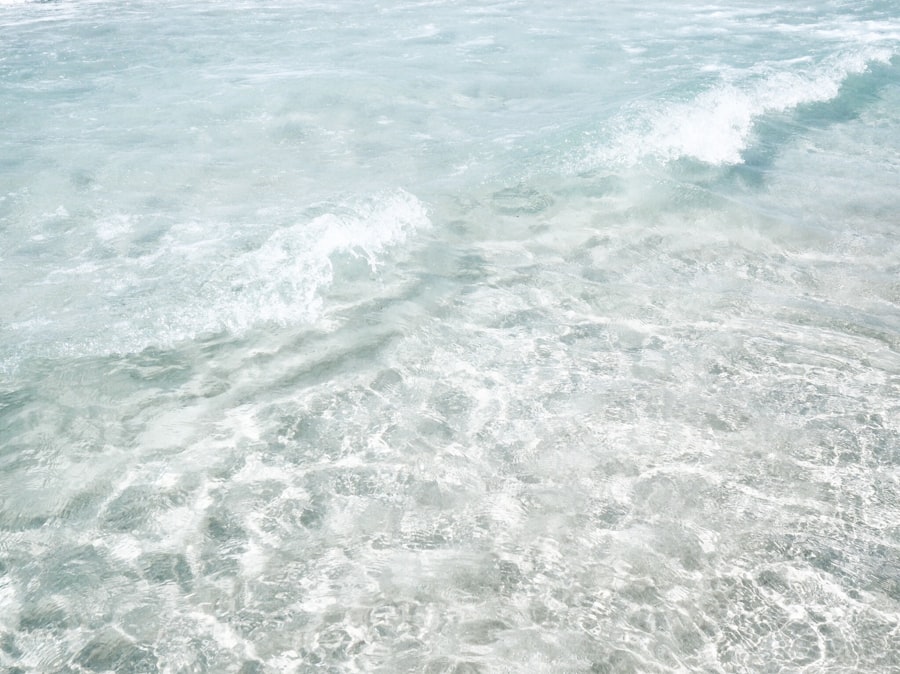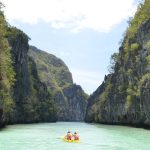Paradise Found: Rediscovering Boracay’s Beauty
Description
Boracay, a small island in the Philippines, has long been celebrated for its stunning white-sand beaches and vibrant nightlife. Its rise to fame began in the 1970s when it was discovered by backpackers and adventurous travelers seeking an idyllic escape. The island’s powdery white sand, known as “sugar sand,” and crystal-clear waters quickly captured the hearts of visitors.
By the 1980s, Boracay had transformed into a popular tourist destination, attracting both local and international travelers. The island’s natural beauty, coupled with its burgeoning hospitality industry, led to rapid development, with hotels, restaurants, and bars springing up to accommodate the influx of tourists. However, this rapid growth came at a cost.
By the early 2000s, Boracay faced significant environmental challenges due to overdevelopment and unregulated tourism. The island’s infrastructure struggled to keep pace with the increasing number of visitors, leading to issues such as waste management problems, water pollution, and habitat destruction. The once-pristine beaches became littered with trash, and the coral reefs suffered from the effects of pollution and overfishing.
In 2018, the Philippine government took decisive action by temporarily closing Boracay for six months to implement a comprehensive rehabilitation plan aimed at restoring the island’s natural beauty and addressing the environmental degradation caused by years of unchecked tourism.
Key Takeaways
- Boracay’s history is marked by rapid development, environmental degradation, and eventual closure for rehabilitation.
- Environmental rehabilitation efforts have focused on restoring the island’s natural beauty through strict regulations and sustainable practices.
- Sustainable tourism initiatives aim to balance the influx of tourists with the conservation of Boracay’s delicate ecosystem.
- Boracay’s pristine beaches and clear waters have been rediscovered through the island’s rehabilitation efforts.
- The island offers diverse marine life for snorkeling and diving adventures, providing a unique experience for nature enthusiasts.
Environmental Rehabilitation Efforts: Restoring Boracay’s Natural Beauty
The rehabilitation of Boracay was a monumental task that required collaboration between government agencies, local stakeholders, and environmental organizations. Upon its closure in April 2018, the government initiated a series of measures designed to restore the island’s ecosystems and improve its infrastructure. One of the primary focuses was on waste management; the government implemented stricter regulations on waste disposal and established a centralized waste treatment facility to process sewage and solid waste effectively.
This facility was crucial in reducing pollution levels in the surrounding waters, which had previously been a significant concern for both residents and tourists. In addition to waste management improvements, efforts were made to restore Boracay’s natural habitats. Reforestation projects were launched to replenish native vegetation that had been lost due to development.
The government also worked on restoring coral reefs through various marine conservation programs, including coral planting and protection initiatives. These efforts aimed to revive the underwater ecosystems that are vital for maintaining biodiversity and supporting local fisheries.
Sustainable Tourism Initiatives: Balancing Tourism and Conservation

As Boracay reopened to tourists in October 2018, a new approach to tourism was adopted—one that emphasized sustainability and conservation. The government introduced a cap on the number of tourists allowed on the island at any given time, limiting daily arrivals to around 19,000 visitors. This measure aimed to prevent overcrowding and reduce the strain on local resources while ensuring that visitors could enjoy a more tranquil experience.
Additionally, accommodations were required to comply with environmental standards, including proper waste disposal practices and energy-efficient operations. Local businesses also embraced sustainable practices as part of their operations. Many resorts began implementing eco-friendly initiatives such as using solar energy, reducing plastic usage, and sourcing food locally.
These changes not only benefited the environment but also enhanced the overall visitor experience by promoting a deeper connection with the island’s natural surroundings. Community-based tourism initiatives were encouraged, allowing visitors to engage with local culture while supporting small businesses and artisans. This approach fostered a sense of responsibility among tourists and helped preserve Boracay’s unique cultural heritage.
Rediscovering Boracay’s Pristine Beaches and Clear Waters
| Location | Activities | Accommodation | Restaurants |
|---|---|---|---|
| Boracay Island, Philippines | Swimming, snorkeling, sunbathing | Hotels, resorts, beachfront villas | Beachfront cafes, seafood restaurants |
With its rehabilitation efforts underway, Boracay has gradually regained its status as one of the world’s most beautiful beach destinations. The island’s famous White Beach, known for its powdery sand and stunning sunsets, has seen significant improvements in cleanliness and maintenance.
The crystal-clear waters surrounding Boracay have also benefited from environmental restoration efforts. Improved waste management practices have led to a noticeable reduction in water pollution, allowing marine ecosystems to thrive once again. Snorkelers and divers can now explore vibrant coral reefs teeming with life just off the coast, providing an opportunity for visitors to connect with nature in a way that was previously compromised.
The revitalization of Boracay’s beaches and waters has not only attracted returning tourists but has also drawn new visitors eager to experience the island’s natural beauty.
Exploring Boracay’s Diverse Marine Life: Snorkeling and Diving Adventures
Boracay is not just about its stunning beaches; it is also home to a rich underwater ecosystem that offers incredible opportunities for snorkeling and diving enthusiasts. The waters surrounding the island are part of the Coral Triangle, one of the most biodiverse marine regions in the world. This area is known for its vibrant coral reefs, which provide habitats for countless species of fish, mollusks, and other marine organisms.
Diving spots such as Crocodile Island and Yapak are popular among divers seeking to explore underwater caves, vibrant coral gardens, and encounters with larger marine species like reef sharks and sea turtles. Snorkeling excursions are equally rewarding, allowing visitors to witness colorful fish darting among corals just a few meters from the shore. Local dive shops offer guided tours led by experienced instructors who prioritize safety while sharing their knowledge about marine conservation efforts.
The resurgence of marine life in Boracay is a testament to the success of rehabilitation initiatives aimed at protecting these ecosystems. Tourists are increasingly encouraged to participate in responsible snorkeling and diving practices that minimize their impact on fragile coral reefs. This includes adhering to guidelines such as avoiding touching or stepping on corals and using reef-safe sunscreen products that do not harm marine life.
Connecting with Local Culture: Immersing in Boracay’s Community and Traditions

Beyond its natural beauty, Boracay boasts a rich cultural heritage that reflects the traditions of its indigenous people as well as influences from various cultures over centuries. Engaging with local communities provides visitors with an opportunity to learn about traditional crafts, culinary practices, and cultural celebrations that define life on the island. One way to connect with local culture is through culinary experiences that showcase traditional Filipino dishes made from fresh ingredients sourced from local markets.
Visitors can participate in cooking classes where they learn how to prepare dishes like adobo or sinigang while gaining insight into the significance of these meals within Filipino culture. Additionally, cultural festivals such as Ati-Atihan celebrate the island’s history and traditions through vibrant parades featuring traditional music, dance, and colorful costumes. Artisans on Boracay also offer workshops where tourists can learn traditional crafts such as weaving or pottery-making.
These experiences not only provide insight into local craftsmanship but also support sustainable livelihoods for community members. By immersing themselves in Boracay’s culture, visitors can foster meaningful connections with locals while gaining a deeper appreciation for the island’s heritage.
Responsible Travel Tips: How to Enjoy Boracay Responsibly
As tourism continues to thrive in Boracay post-rehabilitation, it is essential for visitors to adopt responsible travel practices that contribute positively to the island’s environment and community. One key aspect is minimizing waste; travelers should carry reusable water bottles, bags, and utensils to reduce single-use plastics that often end up polluting beaches and oceans. Respecting local customs is another important consideration for responsible travel.
Tourists should familiarize themselves with cultural norms and practices before engaging with local communities. This includes dressing modestly when visiting religious sites or participating in cultural events. Additionally, travelers should seek out eco-friendly accommodations that prioritize sustainability in their operations.
Engaging in activities that support conservation efforts is also a great way for tourists to give back to Boracay during their visit. Participating in beach clean-up events or supporting local conservation organizations can help protect the island’s natural resources while fostering a sense of community among visitors and residents alike.
The Future of Boracay: Preserving its Beauty for Generations to Come
Looking ahead, the future of Boracay hinges on continued commitment to sustainable tourism practices and environmental conservation efforts. As global awareness of climate change grows, it is crucial for stakeholders—including government agencies, local businesses, and tourists—to work collaboratively towards preserving the island’s unique ecosystems. Ongoing education about responsible tourism practices will play a vital role in ensuring that future generations can enjoy Boracay’s beauty without compromising its integrity.
Initiatives aimed at raising awareness about marine conservation, waste management, and cultural preservation will be essential in fostering a culture of sustainability among both locals and visitors. Ultimately, preserving Boracay’s natural beauty requires a collective effort that prioritizes environmental stewardship while celebrating the rich cultural heritage that defines this beloved destination. By embracing sustainable practices today, we can ensure that Boracay remains a paradise for generations to come—a place where pristine beaches meet vibrant marine life and rich traditions thrive amidst breathtaking landscapes.
FAQs
What is Boracay?
Boracay is a small island in the Philippines known for its beautiful white sand beaches and clear blue waters. It is a popular tourist destination for its stunning natural beauty and vibrant nightlife.
What are the popular activities in Boracay?
Some popular activities in Boracay include swimming, snorkeling, scuba diving, kite surfing, and island hopping. The island also offers a variety of restaurants, bars, and shops for visitors to enjoy.
When is the best time to visit Boracay?
The best time to visit Boracay is during the dry season, which runs from November to April. This is when the weather is most pleasant and the waters are calm, making it ideal for beach activities.
Is Boracay family-friendly?
Yes, Boracay is a family-friendly destination with plenty of activities and accommodations suitable for families. The island offers a range of options for visitors of all ages, including kid-friendly beaches and resorts.
Are there any environmental regulations in Boracay?
Yes, in 2018, the Philippine government closed Boracay for six months to undertake a massive rehabilitation effort to address issues such as overdevelopment, pollution, and overcrowding. Since then, the government has implemented strict environmental regulations to ensure the sustainable development of the island.





